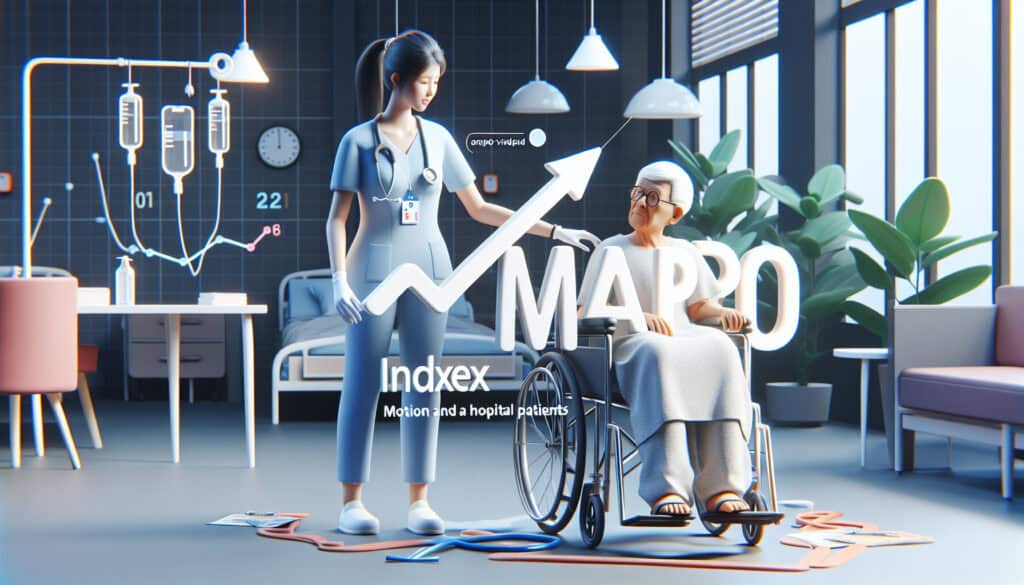To assess the risk of musculoskeletal injury to healthcare workers when moving patients.
- Methodologien: Ideenfindung, Produktdesign
MAPO-Index (Bewegung und Unterstützung von Krankenhauspatienten)

MAPO-Index (Bewegung und Unterstützung von Krankenhauspatienten)
- Ergonomie, Gesundheitspflege, Menschliche Faktoren, Human Factors Engineering (HFE), Prozessverbesserung, Qualitätsmanagement, Risikoanalyse, Risikomanagement, Sicherheit
Zielsetzung:
Wie es verwendet wird:
- A risk assessment tool specifically designed for the healthcare sector. It evaluates the risk associated with lifting and moving patients by considering factors like the patient's weight, the type of transfer, and the available equipment.
Vorteile
- Provides a specific risk score for patient handling tasks; Helps in selecting the right patient handling equipment.
Nachteile
- Specific to healthcare settings; Requires training to be used effectively.
Kategorien:
- Ergonomie, Risikomanagement
Am besten geeignet für:
- Assessing and reducing the risk of injury for nurses and other healthcare staff involved in patient handling.
The MAPO Index methodology finds its application predominantly within hospitals and healthcare facilities where safe patient handling is a priority. It serves as an actionable tool during various phases of patient care, including pre-admission assessments and during the development of protocols for patient transfers. The tool is designed to be utilized by healthcare staff such as nurses, rehabilitation therapists, and occupational health professionals, who can collaboratively evaluate and score the risk associated with different patient handling scenarios. Its structured approach allows teams to assess not just the physical attributes of the patient, such as their weight and mobility level, but also incorporates the context of the transfer—whether using manual lifting techniques or assistive devices like hoists and slings. By adopting the MAPO Index, hospitals can develop training modules that educate staff on best practices for patient handling, reducing the likelihood of workplace injuries commonly associated with lifting and moving patients. In addition, the index aids administrators in resource allocation, guiding the investment in equipment that aligns with identified needs based on risk assessments, thus optimizing safety protocols and enhancing the overall care quality within the healthcare environment. Deploying this methodology can lead to measurable improvements in workplace safety statistics, ultimately promoting a culture of safety and care among health service providers.
Die wichtigsten Schritte dieser Methodik
- Identify the patient’s weight and mobility level.
- Determine the type of transfer required (e.g., bed to chair, chair to toilet).
- Assess the physical environment for space and equipment limitations.
- Evaluate the available patient handling equipment and its appropriateness for the transfer.
- Calculate the risk score based on the gathered information.
- Implement strategies to mitigate identified risks in the patient handling task.
- Review and adjust the approach based on ongoing assessments and feedback during the transfer.
Profi-Tipps
- Implement ongoing training programs that focus on the integration of the MAPO Index into daily handling practices, ensuring staff are familiar with assessment protocols.
- Utilize data analytics tools to aggregate MAPO Index scores over time, identifying patterns that may indicate areas needing improvement in equipment or protocols.
- Encourage feedback from nursing staff on the practicality of MAPO assessments in real-world scenarios, using this input to refine guidelines and enhance safety measures.
Verschiedene Methoden lesen und vergleichen, Wir empfehlen die
> Umfassendes Methoden-Repository <
zusammen mit den über 400 anderen Methoden.
Ihre Kommentare zu dieser Methodik oder zusätzliche Informationen sind willkommen auf der Kommentarbereich unten ↓ , sowie alle ingenieursbezogenen Ideen oder Links.
Historical Context
1999-05-01
2000
2002
2013
1998
2000
2000
2003
2013-09-24
(if date is unknown or not relevant, e.g. "fluid mechanics", a rounded estimation of its notable emergence is provided)









Verwandte Artikel
Fragebögen zu muskuloskelettalen Beschwerden
Multivariate Tests (MVT)
Mehrfache Regressionsanalyse
Motion-Capture-Systeme
MoSCoW-Methode
Moods Median-Test